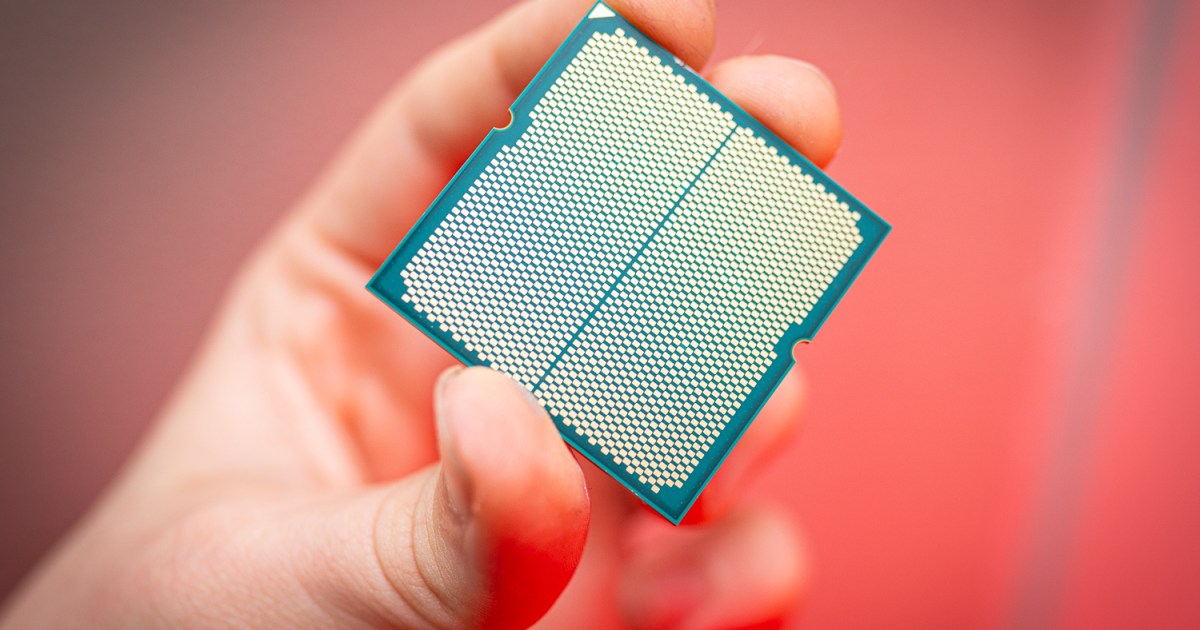When choosing a CPU for your desktop or laptop, the two dominant forces are Intel and AMD. While Qualcomm is emerging as a contender, Intel and AMD still offer the best processors for demanding tasks like gaming and professional productivity. However, both companies have faced recent challenges. AMD’s Ryzen 9000 series received a lukewarm response, and Intel’s Core Ultra 200 series fared even worse. The future may hinge on X3D CPUs and innovative turbo modes. Despite these setbacks, the rivalry between Intel and AMD continues to drive innovation. This article provides a comprehensive comparison of their latest offerings, guiding you through the complexities of choosing your next CPU upgrade.
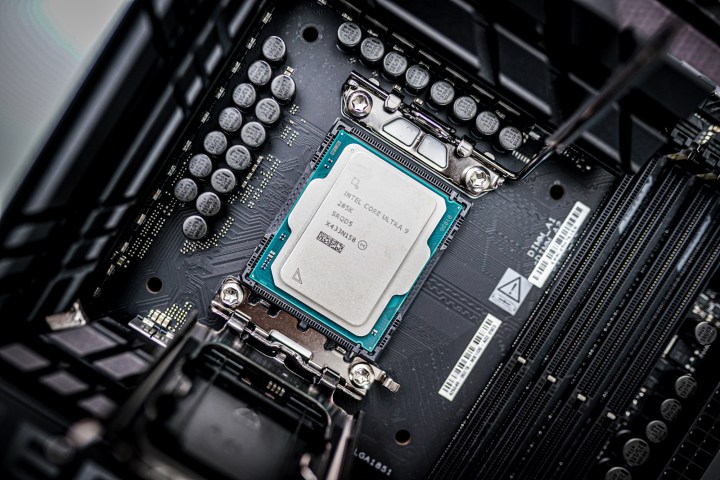 The Core Ultra 9 285K socketed into a motherboard.Image: The Intel Core Ultra 9 285K installed on a motherboard. (Jacob Roach / MaagX)
The Core Ultra 9 285K socketed into a motherboard.Image: The Intel Core Ultra 9 285K installed on a motherboard. (Jacob Roach / MaagX)
AMD and Intel are iconic names in the PC world. For decades, they’ve battled to deliver the fastest, most capable processors for everyone from gamers and professionals to casual users. AMD has historically introduced groundbreaking designs, prompting Intel to respond with its own revolutionary chips. While Intel held a firm grip on flagship performance between 2005 and 2015, AMD dramatically shifted the landscape with its Ryzen processors in 2017. This sparked a renewed era of competition, culminating in today’s neck-and-neck race for CPU dominance. The latest generation CPUs from both companies prioritize efficiency improvements, significantly reducing power consumption.
Desktop Processors: A Head-to-Head Comparison
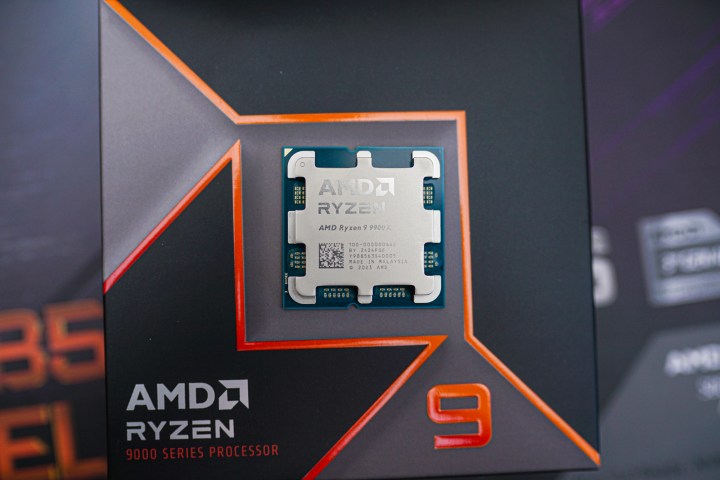 The Ryzen 9 9900X sitting on its box.Image: The AMD Ryzen 9 9900X CPU. (Jacob Roach / MaagX)
The Ryzen 9 9900X sitting on its box.Image: The AMD Ryzen 9 9900X CPU. (Jacob Roach / MaagX)
Both AMD and Intel offer a wide array of processors for your next upgrade. The current mainstream models are AMD’s Ryzen 9000 series and Intel’s 14th-generation Raptor Lake. These processors boast up to 24 cores, clock speeds reaching 6GHz, and significantly increased cache. However, they don’t offer a dramatic performance leap over Intel’s 13th generation, keeping those chips relevant.
Here’s a comparison of the latest mainstream CPUs:
AMD Ryzen 9000 Series
| Feature | Ryzen 9 9950X | Ryzen 9 9900X | Ryzen 7 9700X | Ryzen 5 9600X |
|---|---|---|---|---|
| Cores/Threads | 16/32 | 12/24 | 8/16 | 6/12 |
| Cache (L2+L3) | 80MB | 76MB | 40MB | 40MB |
| Base Clock | 4.3GHz | 4.4GHz | 3.8GHz | 3.9GHz |
| Boost Clock | 5.7GHz | 5.6GHz | 5.5GHz | 5.4GHz |
| TDP | 170W | 120W | 65W | 65W |
Intel Core Ultra 200 Series
| Feature | Core Ultra 9 285K | Core Ultra 7 265K | Core Ultra 5 255K |
|---|---|---|---|
| Cores/Threads | 24 (8+16)/32 | 16 (6+8)/20 | 14 (6+8)/20 |
| Cache (L2+L3) | 76MB | 64MB | 45MB |
| Base Clock | 3.7GHz (P-core), 3.2GHz (E-core) | 3.9GHz (P-core), 3.3GHz (E-core) | 4.2GHz (P-core), 3.6GHz (E-core) |
| Boost Clock | Up to 5.7GHz | Up to 5.5GHz | Up to 5.2GHz |
| TDP | 125W/250W | 125W/150W | 65W/125W |
This table highlights the key models. Both AMD and Intel offer additional variants, such as AMD’s non-X versions and Intel’s KF models (without integrated graphics). AMD also offers 3D V-Cache CPUs like the 7950X3D and 7800X3D, designed for gaming with increased cache but lower clock speeds. While AMD hasn’t released Ryzen 9000 X3D CPUs yet, the 7800X3D currently reigns supreme in gaming performance. New X3D models are expected in November 2024. Both companies also offer budget options, though these are generally from previous generations. Intel will expand its Arrow Lake Core Ultra 200 series in the coming months.
The Quest for the Fastest Processor
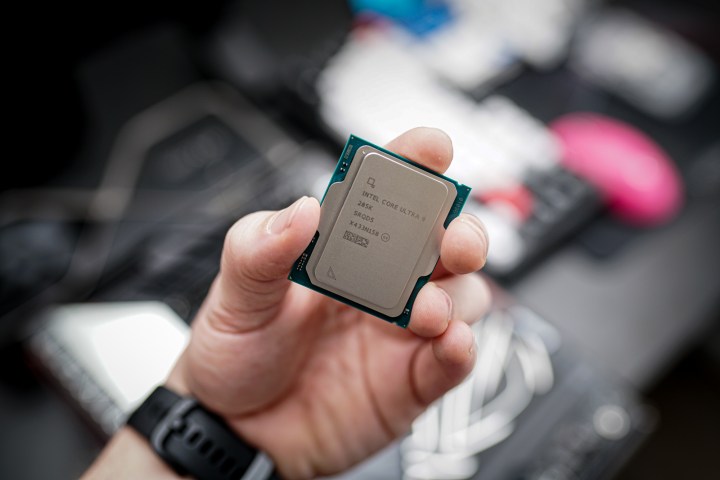 Fingers holding an Intel 285K.Image: Close-up of the Intel Core Ultra 9 285K. (Jacob Roach / MaagX)
Fingers holding an Intel 285K.Image: Close-up of the Intel Core Ultra 9 285K. (Jacob Roach / MaagX)
Determining the “best” CPU is complex. AMD’s Ryzen 9 9950X and 9900X excel in productivity, while the last-generation 7800X3D and 7950X3D dominate gaming. Intel’s Core Ultra 200 series prioritizes efficiency but lags behind in gaming, even compared to some previous-generation Intel chips. The two companies achieve performance differently. AMD uses a single architecture with simultaneous multi-threading (SMT), doubling thread count. Intel’s latest chips utilize a hybrid architecture without SMT, combining performance and efficiency cores. For example, the 285K has eight performance cores and sixteen efficiency cores, totaling 24 cores and 24 threads. The previous-generation Intel Core i9-14900K features 24 cores (8+16) and 32 threads. AMD also has potent last-gen chips, particularly the X3D models with their extra cache.
 Performance for the Ryzen 9 9950X and Ryzen 9 9900X in Cinebench multi-core.Image: Multi-core performance comparison of the Ryzen 9 9950X and Ryzen 9 9900X in Cinebench. (Jacob Roach / MaagX)
Performance for the Ryzen 9 9950X and Ryzen 9 9900X in Cinebench multi-core.Image: Multi-core performance comparison of the Ryzen 9 9950X and Ryzen 9 9900X in Cinebench. (Jacob Roach / MaagX)
Benchmarks for Intel’s 285K and 265K were less impressive. While efficient, they often trail behind last-generation competitors. Intel’s 13th and 14th-gen CPUs, particularly the i9-13900K and i9-14900K, experienced instability issues. While mostly resolved through microcode updates, it’s a factor to consider. High-value options include the Intel Core i5-13600K and 14600K, offering strong performance at lower prices. AMD’s 9600X and 9700X have become more attractive after recent price drops and performance patches. For gamers, AMD’s 3D V-Cache processors remain compelling. Older-generation CPUs, like AMD’s Ryzen 5000 series and Intel’s 12th generation, are still viable.
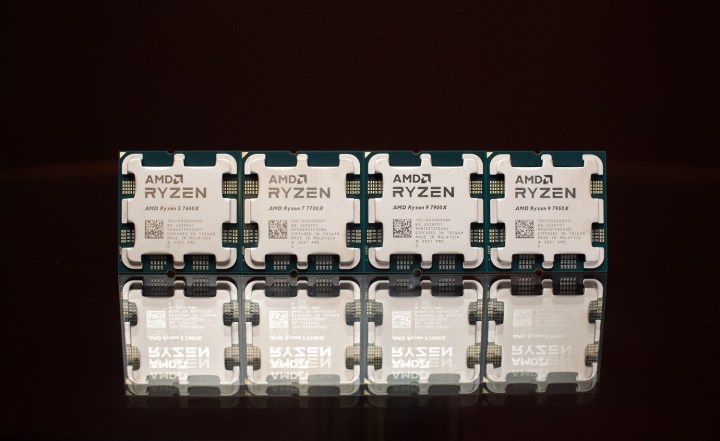 A group shot of Ryzen 7000 CPUs.Image: AMD Ryzen 7000 series CPUs. (MaagX)
A group shot of Ryzen 7000 CPUs.Image: AMD Ryzen 7000 series CPUs. (MaagX)
For budget builds, Intel’s Core i3-12100F and AMD’s Ryzen 5 5500 offer good value. Intel might be the better choice for systems without dedicated graphics. Currently, the Core i9-14900K is Intel’s fastest gaming CPU, while the 285K may be better for productivity. However, the Ryzen 9 9950X remains a strong contender for workloads requiring powerful individual cores.
High-End Desktop Processors (HEDT)
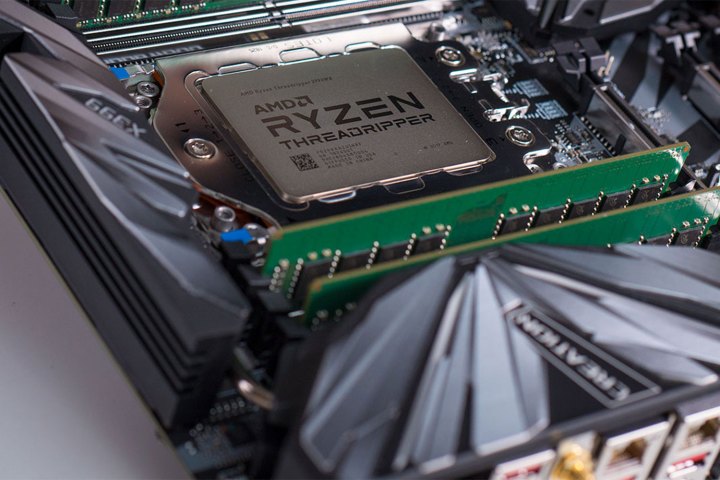 An AMD Threadripper processor in a motherboard.Image: An AMD Threadripper processor installed in a motherboard. (MaagX)
An AMD Threadripper processor in a motherboard.Image: An AMD Threadripper processor installed in a motherboard. (MaagX)
For demanding tasks like high-resolution video editing, transcoding, or CAD work, HEDT CPUs offer unparalleled performance. While Intel offers HEDT options, AMD’s Threadripper Pro Ryzen 7000 series currently dominates this segment, providing up to 96 cores and surpassing Intel’s offerings in multi-threaded performance. These processors also support more PCI-Express lanes, benefiting large storage arrays. While expensive, they can be a worthwhile investment for professionals who can leverage the extra cores.
Laptop Processors: A Shifting Landscape
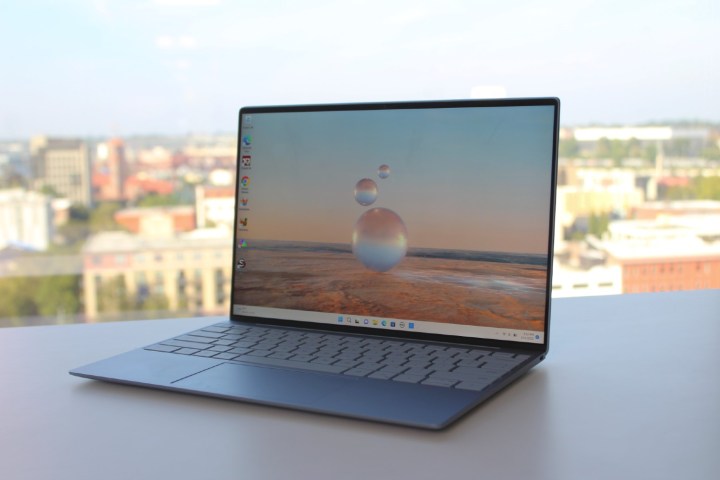 The Dell XPS 13, open on a table in front of a window.Image: The Dell XPS 13 laptop. (MaagX)
The Dell XPS 13, open on a table in front of a window.Image: The Dell XPS 13 laptop. (MaagX)
The laptop market presents a different dynamic. While Intel dominates, AMD is gaining traction. Both companies have introduced new mobile processors. AMD’s Ryzen AI 300 series emphasizes efficiency and AI performance, while Intel’s Lunar Lake CPUs adopt a hybrid architecture. Both offer solid performance, but Intel leads in battery life, while AMD has a slight edge in overall performance.
The Verdict: AMD or Intel?
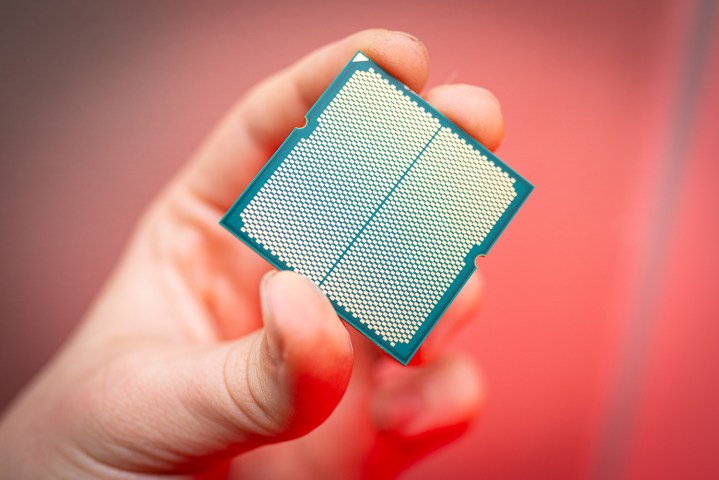 Pads on the bottom of the Ryzen 9 7950X.Image: The underside of the Ryzen 9 7950X CPU. (Jacob Roach / MaagX)
Pads on the bottom of the Ryzen 9 7950X.Image: The underside of the Ryzen 9 7950X CPU. (Jacob Roach / MaagX)
For everyday tasks, both AMD and Intel CPUs deliver excellent performance. However, AMD’s laptop CPUs currently lead in multi-threaded workloads, although Intel offers comparable performance with potentially better battery life. On the desktop side, AMD’s Ryzen 9000 series provides top-tier performance, while the Ryzen 7800X3D leads in gaming. The upcoming Ryzen 9000X3D chips are poised to further solidify AMD’s gaming dominance. Ultimately, the best choice depends on your specific needs and priorities.



